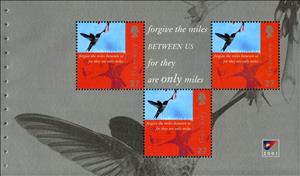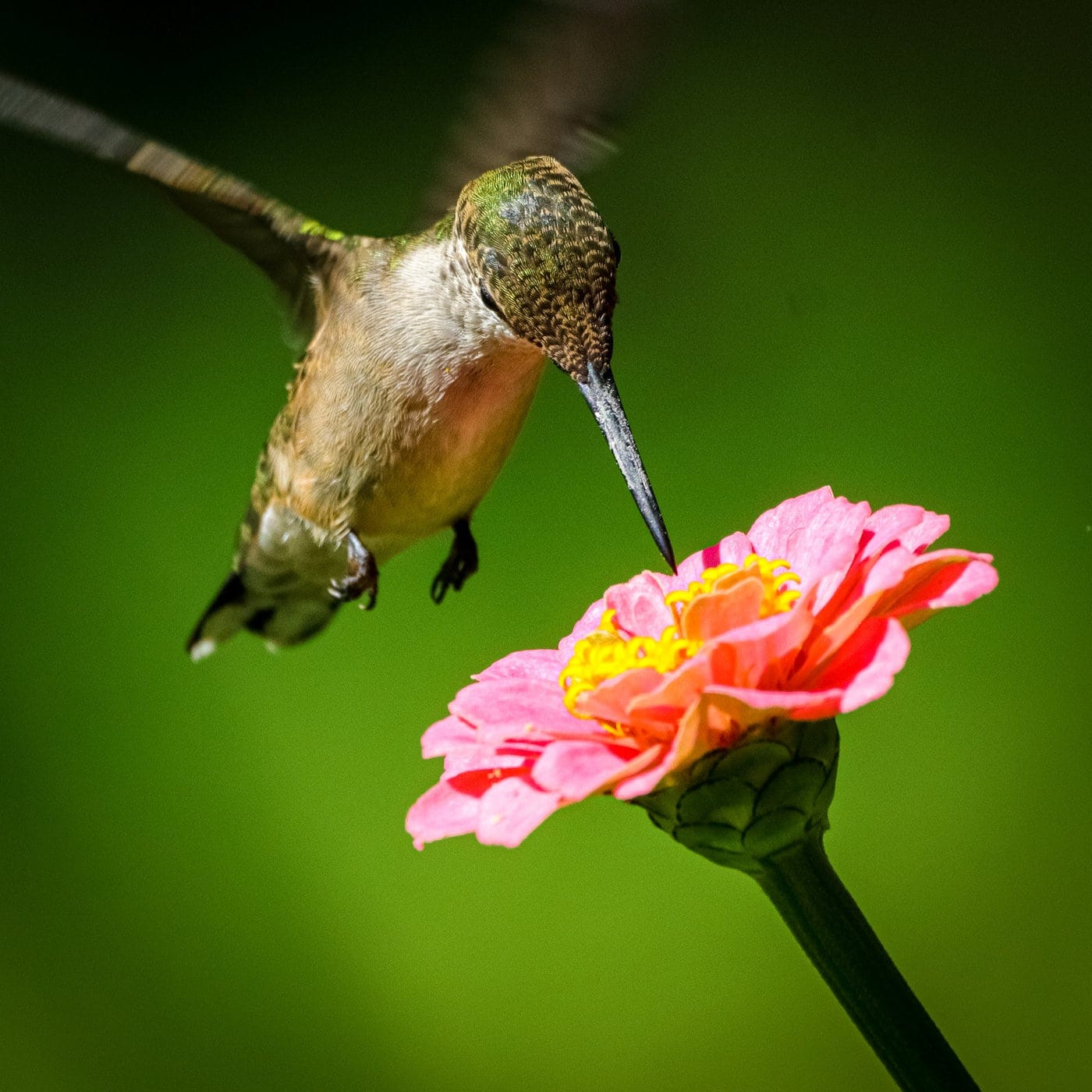Booklet Pane: Ruby-throated Hummingbird (Archilochus colubris) (bkl pane) (Guernsey 2001)
Ruby-throated Hummingbird (Archilochus colubris) (bkl pane) (Guernsey 2001)
01 August (Guernsey ) within release Incorporation of Guernsey Post Ltd goes into circulation Booklet Pane Ruby-throated Hummingbird (Archilochus colubris) (bkl pane) face value 3*27 Guernsey penny
| Booklet Pane Ruby-throated Hummingbird (Archilochus colubris) (bkl pane) in catalogues | |
|---|---|
| Michel: | Mi: GG HB0-36 |
| Stamp Number: | Sn: GG 744a |
Booklet Pane is horizontal format.
Booklet pane from booklet "MI:GG MH0-24". Contains: (3 x "Mi:GG 901").Also in the issue Incorporation of Guernsey Post Ltd:
- Stamp - Droplets of Water on Leaf (Vision) face value 22;
- Stamp - Ruby-throated Hummingbird (Archilochus colubris) - Understan face value 27;
- Stamp - Butterfly's Wings (Individuality) face value 36;
- Stamp - Sea Shell (Strength) face value 40;
- Stamp - Honeycomb (Community) face value 45;
- Stamp - Dandelion (Maturity) face value 65;
- Stamp - St Peter Port face value 1;
- Souvenir Sheet - The Next Step face value 1;
- Booklet Pane - Butterfly's Wings ("Individuality") (booklet pane) face value 3*36;
- Booklet Pane - Dandelion ("Maturity") (booklet pane) face value 3*65;
- Booklet Pane - Droplets of Water on Leaf ("Vision") (booklet pane) face value 3*22;
- Booklet Pane - Honeycomb ("Community") (booklet pane) face value 3*45;
- Booklet Pane - Ruby-throated Hummingbird (Archilochus colubris) (bkl pane) face value 3*27;
- Booklet Pane - Sea Shell ("Strength") (booklet pane) face value 3*40;
- Booklet Pane - The Next Step introducing Guernsey Post Limited (bkl pane) face value 1;
- Booklet - The Next Step introducing Guernsey Post Limited (booklet) face value 8.05;
Booklet Pane Ruby-throated Hummingbird (Archilochus colubris) (bkl pane) it reflects the thematic directions:
Birds (Aves), a subgroup of Reptiles, are the last living examples of Dinosaurs. They are a group of endothermic vertebrates, characterised by feathers, toothless beaked jaws, the laying of hard-shelled eggs, a high metabolic rate, a four-chambered heart, and a strong yet lightweight skeleton. Birds live worldwide and range in size from the 5 cm (2 in) bee hummingbird to the 2.75 m (9 ft) ostrich. They rank as the class of tetrapods with the most living species, at approximately ten thousand, with more than half of these being passerines, sometimes known as perching birds. Birds are the closest living relatives of crocodilians.
Hummingbirds are birds native to the Americas and comprise the biological family Trochilidae. With approximately 366 species and 113 genera, they occur from Alaska to Tierra del Fuego, but most species are found in Central and South America. As of 2024, 21 hummingbird species are listed as endangered or critically endangered, with numerous species declining in population
Flora is the plant life occurring in a particular region or time, generally the naturally occurring or indigenous—native plant life. The corresponding term for animal life is fauna. Flora, fauna and other forms of life such as fungi are collectively referred to as biota. Sometimes bacteria and fungi are also referred to as flora, as in the terms gut flora or skin flora.
The mail or post is a system for physically transporting documents and other small packages; or, the postcards, letters, and parcels themselves. A postal service can be private or public, though many governments place restrictions on private systems. Since the mid-19th century national postal systems have generally been established as government monopolies with a fee on the article prepaid. Proof of payment is often in the form of adhesive postage stamps, but postage meters are also used for bulk mailing. Modern private postal systems are typically distinguished from national postal agencies by the names "courier" or "delivery service". Postal authorities often have functions other than transporting letters. In some countries, a postal, telegraph and telephone (PTT) service oversees the postal system, in addition to telephone and telegraph systems. Some countries' postal systems allow for savings accounts and handle applications for passports.
Special Occasions





